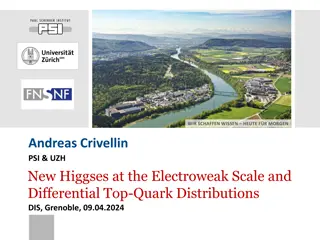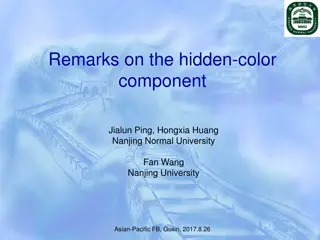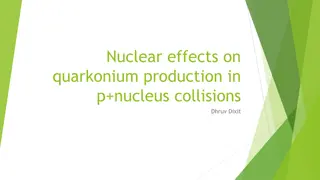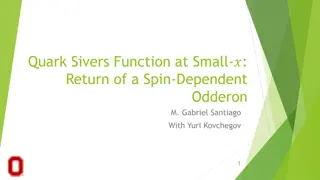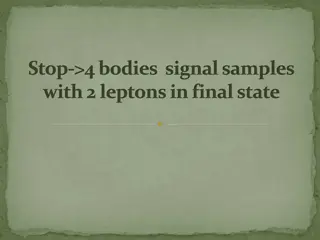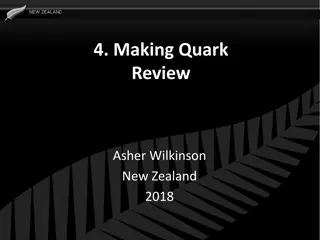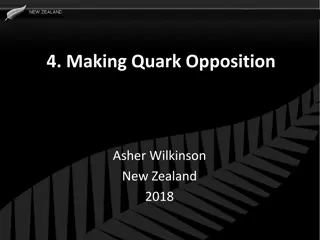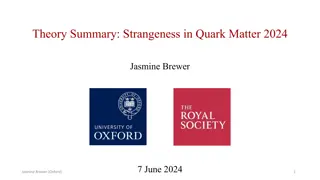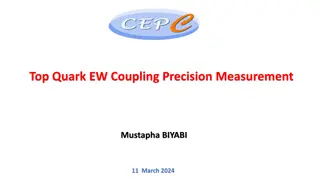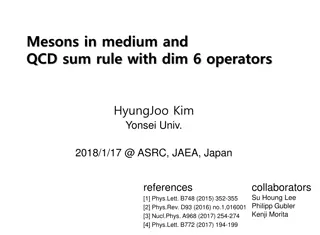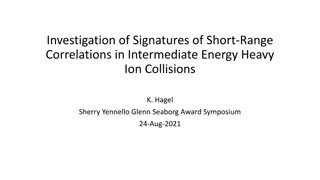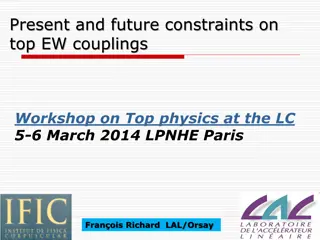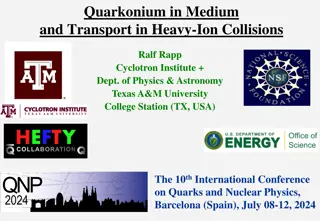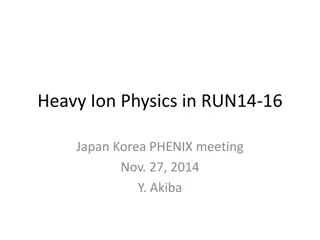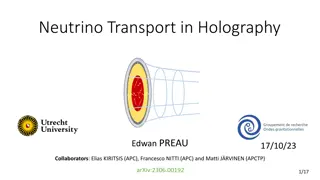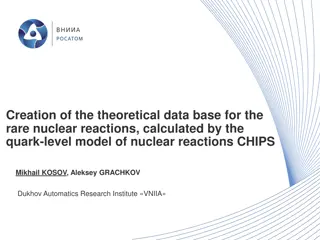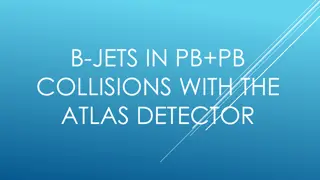
Quark-Gluon Dynamics in High-Temperature QCD Studies
Dive into the exploration of quark-gluon dynamics in high-temperature QCD studies. Discover insights on hadron disappearance, the success of HRG models for cumulants, and the transition to chiral states near critical temperatures. Detailed analyses of quark propagators, soft modes of chiral transitions, and fermion-boson systems provide valuable perspectives. Uncover the essence of quark spectra, plasmino modes, and collective excitations in this intriguing realm of theoretical physics.
Download Presentation

Please find below an Image/Link to download the presentation.
The content on the website is provided AS IS for your information and personal use only. It may not be sold, licensed, or shared on other websites without obtaining consent from the author. If you encounter any issues during the download, it is possible that the publisher has removed the file from their server.
You are allowed to download the files provided on this website for personal or commercial use, subject to the condition that they are used lawfully. All files are the property of their respective owners.
The content on the website is provided AS IS for your information and personal use only. It may not be sold, licensed, or shared on other websites without obtaining consent from the author.
E N D
Presentation Transcript
QCD MK, Kunihiro, Nemoto, in prep. 20aSB4 2013 2013/9/20
QCD @ T>0 Tc* T QCD EoS s K u g d s g g n u p d g g d Success of HRG model for higher-order cumulants below Tc
QCD @ T>0 Tc* T s K u g d s g g n u p d g g d How do hadrons cease to exist? How do quarks and gluons disappear?
Quarks at Extremely High T Klimov 82, Weldon 83 Braaten, Pisarski 89 2 collective excitations having thermal mass ~gT / mT width ~g2T plasmino Minimum of the plasmino mode at nonzero p gT m = T 6 p / mT 1 ( , ) S = p p ( , ) p 0 ( , ) = p
Quarks at Extremely High T Klimov 82, Weldon 83 Braaten, Pisarski 89 2 collective excitations having thermal mass ~gT p 1 = p ( ) 0 2 = + 0 p ( ) p p ( , ) S + + width ~g2T 0 p ( , ) ( ) S Minimum of the plasmino mode at nonzero p / mT
Soft Modes of Chiral Transition Hatsuda, Kunihiro,1985 F( ) Large fluctuations of order parameter near Tc Chiral transition : -modes + + Spectral Function T=1.05Tc p=0
Quark Propagator near Tc MK, Kunihiro Nemoto, 2006 NJL model 2-flavor chiral limit (m0=0) 1 ) = ( , k ) G i n 0 ( , k ( , k ) G i i n n Quark Self-Energy i = + ( , k + + + ) n 3 q d = 0 k q ( , q ( , ) ) T G n m m (2 ) 3 m + + 1+ i = ( , k ) n
Quark Spectrum near Tc MK, Kunihiro Nemoto, 2006 = + + 0 0 0 0 0 ( , p ( , p ( , p ) ) ) A p p p + T= 1.05Tc k [MeV] [MeV] Three-peak structure emerges Sharpest peak around the origin
Fermion & Boson System Yukawa model fermion (mf) + boson (mb) Fermion spectrum at 1-loop order: Klimov, 1982; Weldon, 1983 Baym, Blaizot, Svetitsky, 1992 MK, Kunihiro, Nemoto, 2007 MK, Kunihiro, Mitsutani, Nemoto, 2008
Fermion Spectrum MK, Kunihiro, Nemoto, 2007 Yukawa model, T/mb normal & plasmino with mT massless free fermion Three peak structure emerges for T~mb Low energy peak ceases to exist for mf>0.2mb
Quark Self-Energy at p=0 Im ( ,0) Two peaks develop at low energy. T =1 T =1.5 T =2 T mB Re ( ,0) Two oscillating behavior grows as T is raised. mB
Landau Damping Im ( ,0) T =1 T =1.5 T =2 T mB quark boson Landau damping
Introducing Nonzero m0 2-flavor NJL model What s NEW! Effect of m0 Phase transition becomes crossover. Constituent quarks stay massive. Soft modes do not become massless.
Stable modes above TPC modes can be stable even above TPC for m <2M
Pion Dispersion Relation T=206MeV Lorentz invariant dispersion Dispersion relation of stable pion deviates from Lorentz form. Pionic modes become unstable at nonzero p.
Quark Spectrum T=206 MeV, p=0 M sharp peak at broad peak at [MeV] Strong modification of the quark spectrum Appearance of sharp peak at low energy
Im T=206 MeV, p=0 [MeV] There exist divergences in Im +( )!
van Hove Singularity Relative group velocity of quarks and pions Zeros of group velocity Divergences of joint DoS van Hove singularity
Summary We have studied quark spectrum near but above TPC coupled with the chiral soft modes off the chiral limit. Effects of nonzero m0 nonvanishing masses of constituent quarks soft modes pionic modes: stable even above TPC non-relativistic dispersion Quark spectrum is significantly modified by the van Hove singularity induced by the scattering of quarks and pions. Quark spectrum near TPC can have a sharp peak with a small energy.
T Dependence T Tc T =1.1Tc T large T =1.2Tc T =1.5Tc
Quark Spectrum near Tc MK, Kunihiro Nemoto, 2006 = + + 0 0 0 0 0 ( , p ( , p ( , p ) ) ) A p p p + T= 1.05Tc [MeV] k [MeV] k [MeV] [MeV] Quasi-dispersion relation 1 ( , ) S + = | | Re p ( , ) = p p Re 0 +

